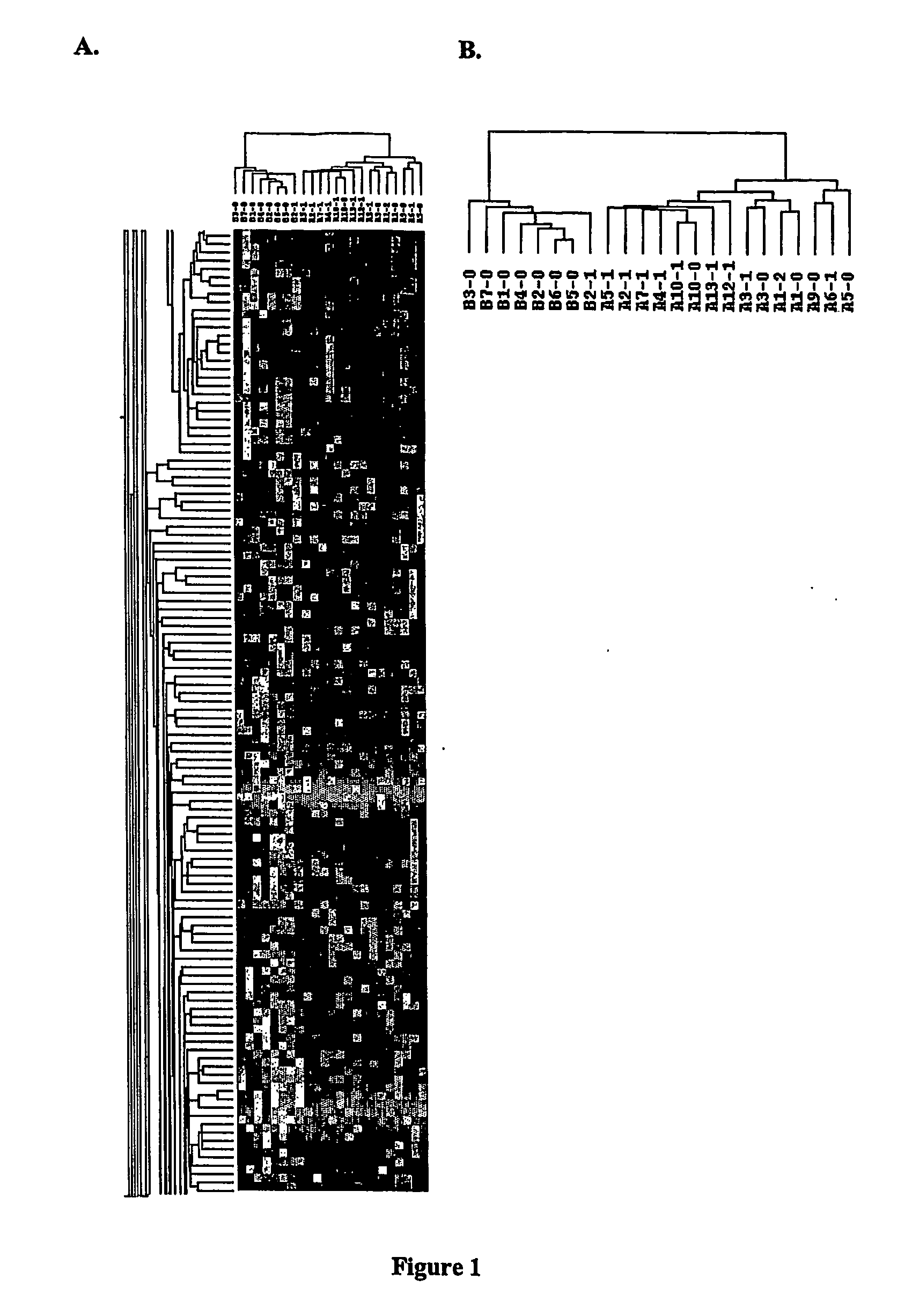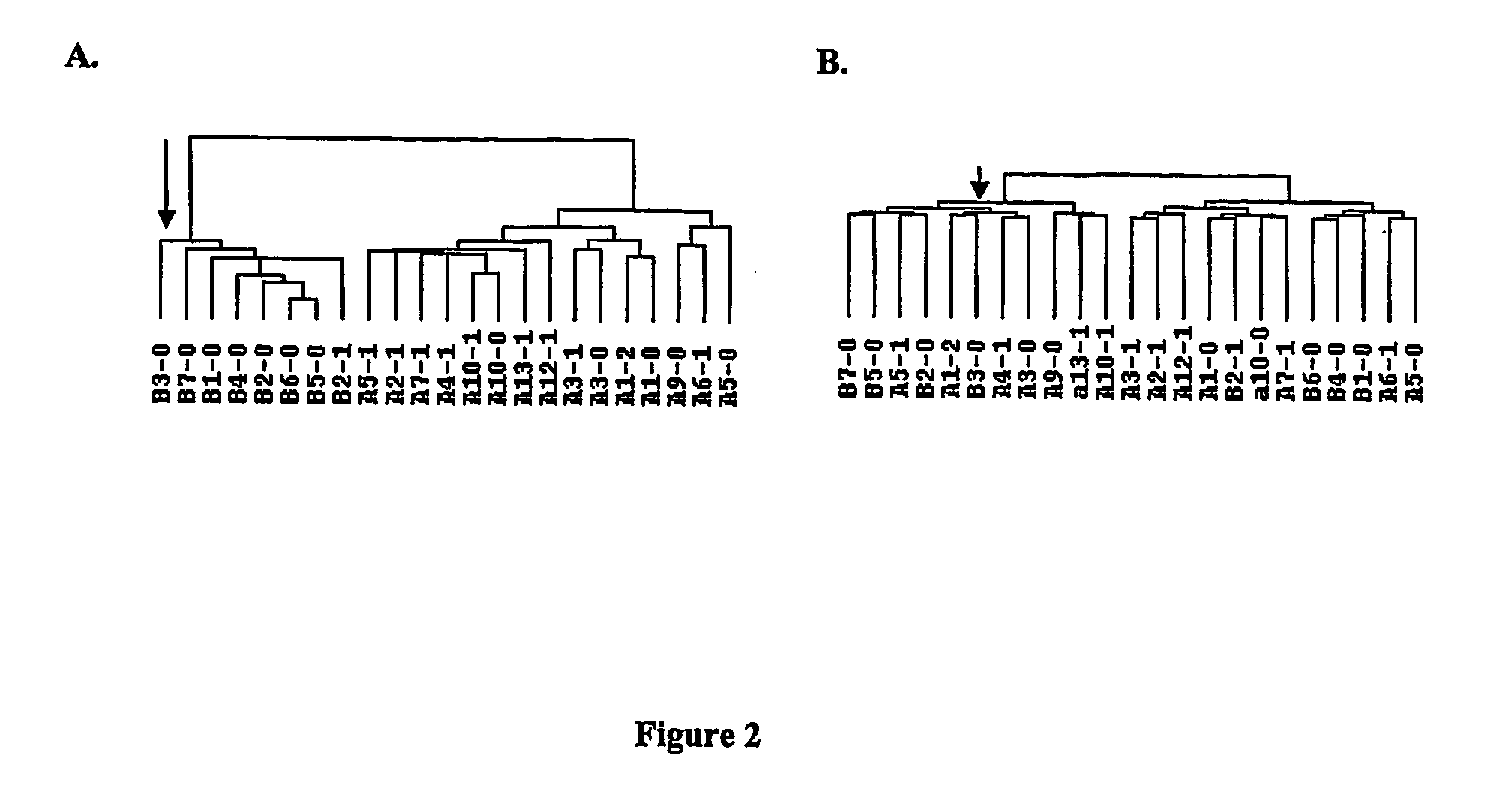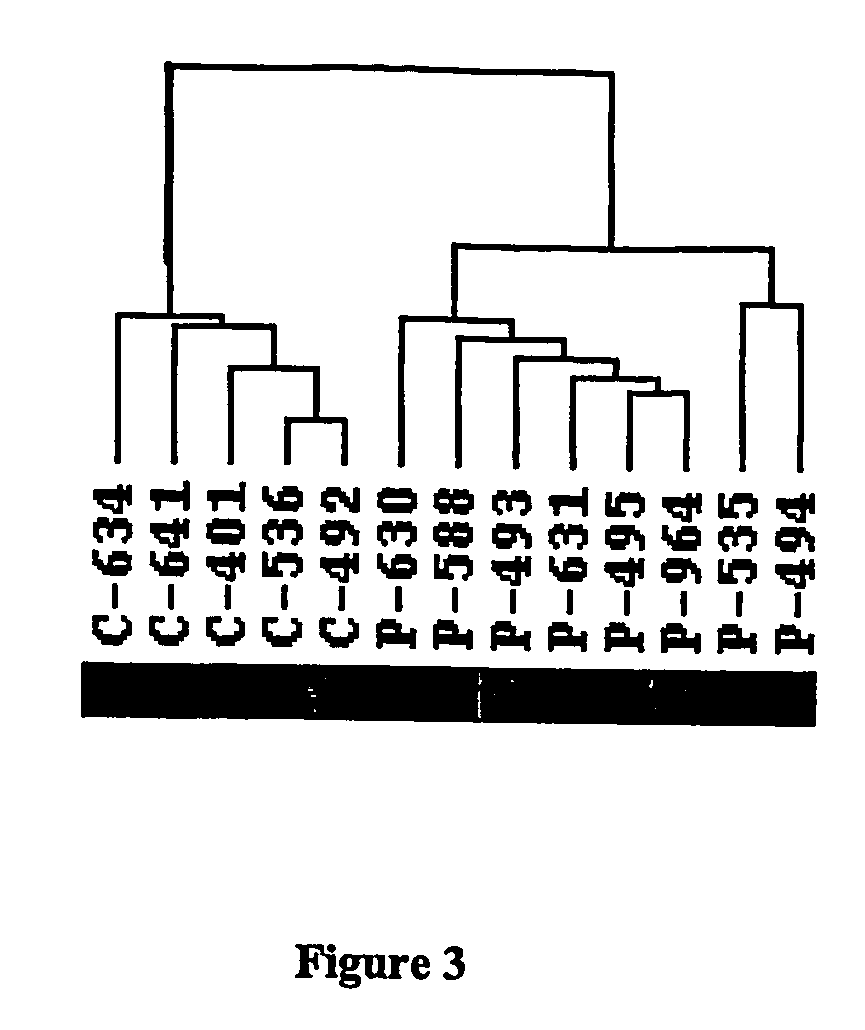Surrogate cell gene expression signatures for evaluating the physical state of a subject
- Summary
- Abstract
- Description
- Claims
- Application Information
AI Technical Summary
Benefits of technology
Problems solved by technology
Method used
Image
Examples
example 1
Expression Profiling of Blood Cells Distinguishes Prostate Cancer Patients
[0100] Patient and Control Subject Recruitment and Study Procedure Institutional Review Board (IRB) approval of the study protocol was obtained.
[0101] Medical Exclusions. A list of medical exclusions was generated for both prostate cancer patients and control subjects. A blood count (CBC) was performed for all samples collected and subjects were excluded if their cell counts were outside of the normal range. Serum PSA tests were performed on all patient and control subjects. Any control subject with serum PSA >4 ng / ml was excluded from further analysis (n=0).
[0102] Prostate Cancer Subjects. Eleven subjects have been recruited for this study since the initiation of screening of men undergoing radical prostatectomy for treatment of prostate cancer. For all subjects, informed consent was obtained according to the regulations of the IRB. Subjects completed a questionnaire (with the assistance of the study coord...
example 2
Psychiatric Illness Diagnosis with Multigene Expression Classification
Patient and Control Subject Recruitment and Study Procedure
[0124] All subject recruitment was performed according to IRB regulations.
[0125] Medicated Schizophrenia (SZ) Subjects. Seven White SZ men between the ages of 25-65 were recruited from the residents of a psychiatric center and four community residential facilities. SZ patients were screened for inclusion based on SZ diagnosis. Patient records from previous admissions and from other facilities were collected for each subject. Informed consent was obtained on the patient's resident ward. Charts were screened for neuroleptic history and in addition for medical history and other medication use. The seven SZ patients who were analyzed in the preliminary study had medication profiles that were diverse and included several different classes of atypical and typical neuroleptic medications: Subject 493: Olanzapine, Depakote, Risperidone., Subject 494: Chloral Hy...
example 3
Prostate Tumor Diagnosis Through Bloodcell Multigene Signatures
Introduction
[0143] Prostate cancer is the second largest cancer killer of men in the Unites States and Europe. It has been estimated that in 2000, in the U.S., 180,400 men were diagnosed with prostate cancer and approximately 32,000 died in that year alone (Greenlee et al., CA Cancer J Clin. 2000; 50(1):7-33). Current techniques for the screening and risk assessment of prostate cancer, as a prerequisite to surgical biopsy procedures, are based upon the measurement of either individual serum biomarkers, or expression of individual genes in circulating malignant cells (Oesterling et al., JAMA 1993; 270(7):860-4; Seaman et al., Urol Clin North Am.; 1993; 20(4):653-63; and Catalona et al., Urology 2000; 56(2):255). These techniques, which include RT-PCR, possess a number of limitations, including lack of specificity and accuracy in the diagnosis and, also a lack of prognostic information. This ultimately yields high number...
PUM
| Property | Measurement | Unit |
|---|---|---|
| Disorder | aaaaa | aaaaa |
Abstract
Description
Claims
Application Information
 Login to View More
Login to View More - R&D
- Intellectual Property
- Life Sciences
- Materials
- Tech Scout
- Unparalleled Data Quality
- Higher Quality Content
- 60% Fewer Hallucinations
Browse by: Latest US Patents, China's latest patents, Technical Efficacy Thesaurus, Application Domain, Technology Topic, Popular Technical Reports.
© 2025 PatSnap. All rights reserved.Legal|Privacy policy|Modern Slavery Act Transparency Statement|Sitemap|About US| Contact US: help@patsnap.com



